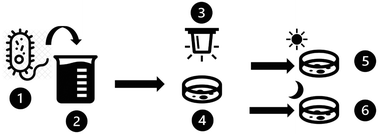Bacterial repair and recovery after UV LED disinfection: implications for water reuse
Abstract
Concern over water scarcity is turning global attention towards reclaiming wastewater to fulfill unmet water demands. Innovative water treatment solutions, like UV LEDs, can be applied in novel ways to treat wastewater effluent for water reuse. However, the ability of microorganisms to repair and regrow after UV LED disinfection in distribution systems fed by recycled wastewater effluent used for beneficial reuse needs to be understood for system design. Therefore, the objective of this research was to understand conditions that impact bacterial repair and regrowth following UV LED exposure and the significance for UV LED disinfection in reuse settings using Pseudomonas aeruginosa as a test organism. The effect of irradiation with 265 nm and 285 nm UV LEDs on P. aeruginosa repair and regrowth was studied in both low and high nutrient waters and dark and light post-UV conditions. Dark repair and regrowth mechanisms represent scenarios of pipe networks, covered storage and drip irrigation, whereas photorepair could occur in a holding pond during recharge or an agricultural reuse scenario. Interestingly, dark repair and regrowth were not observed in any of the treatment conditions. Water matrix did not have any statistically significant effect on P. aeruginosa recovery. UV light emitted at 265 nm inhibited percent photorepair at higher rates than 285 nm, although 265 nm had the highest absolute photorepair value (103.86 CFU mL−1) after a 5 mJ cm−2 exposure. A water reuse scenario, with 285 nm UV LEDs and fluences up to 100 mJ cm−2, revealed that the maximum photorepair potential was reached within 45 minutes. For fluences 10 mJ cm−2 and higher in wastewater effluent, the maximum P. aeruginosa percent photorepair was 0.81%.



 Please wait while we load your content...
Please wait while we load your content...